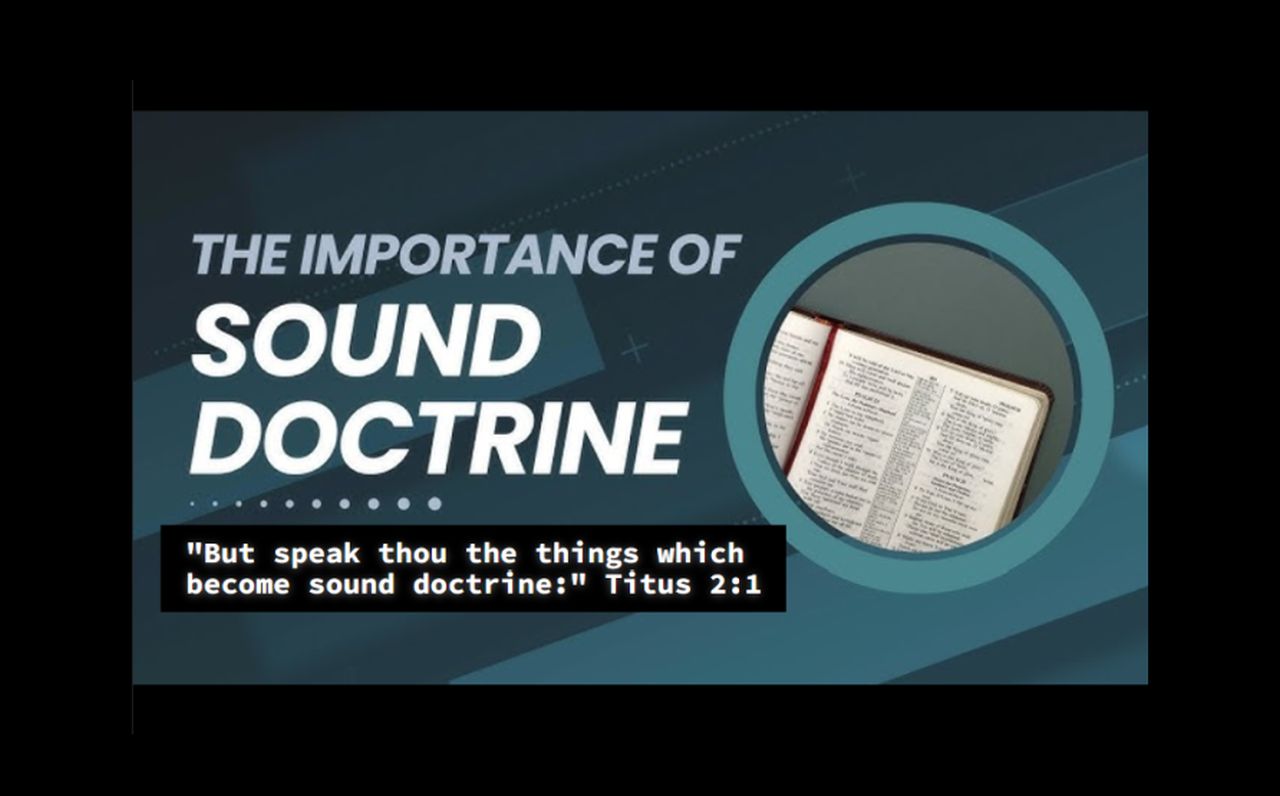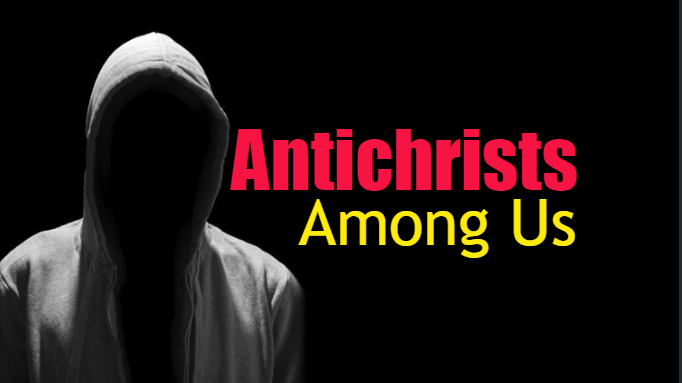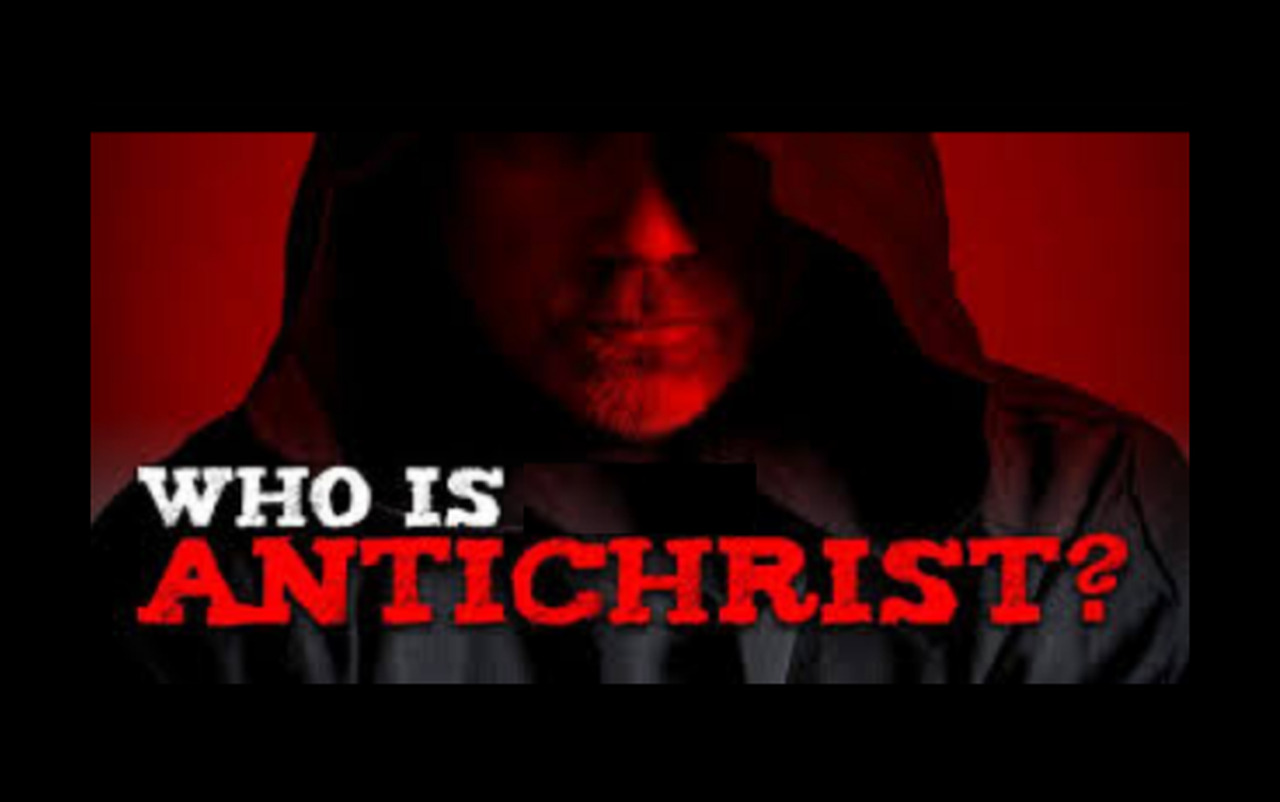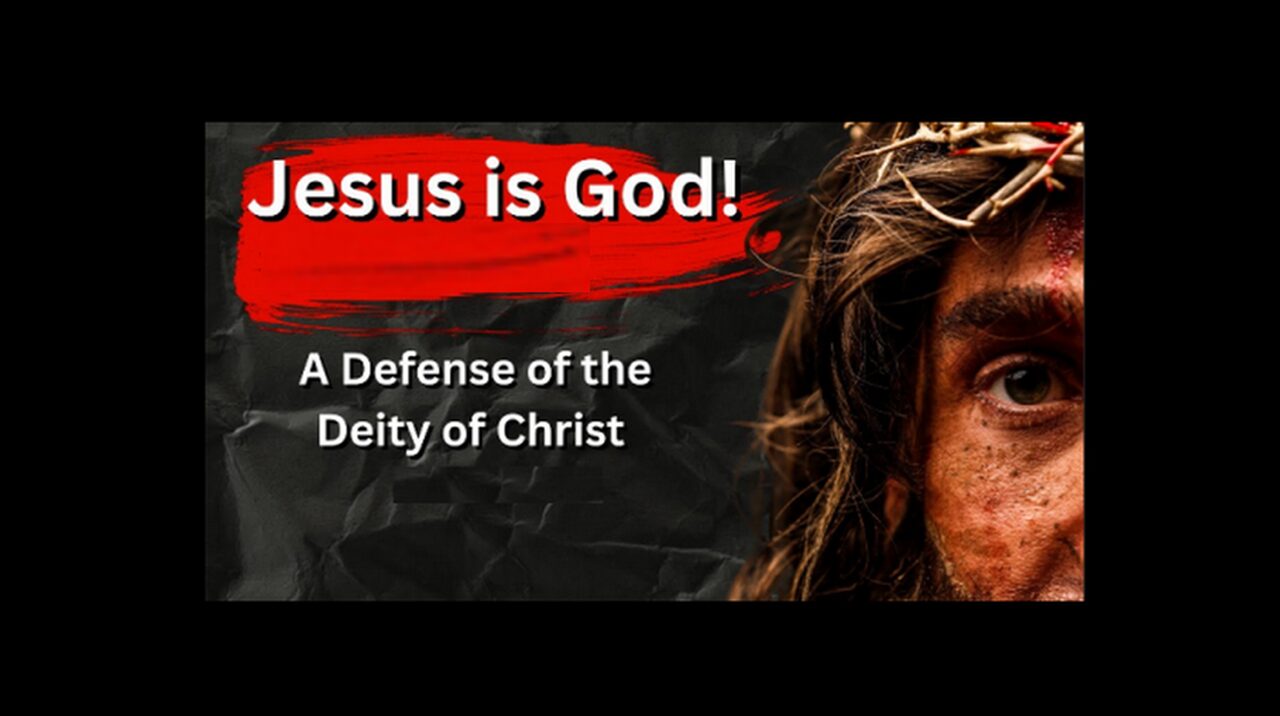Why Did the 1611 KJV Include the Apocrypha?
QUESTION: Didn’t the King James Bible when first printed contain the Apocrypha?
ANSWER: Yes.
EXPLANATION: Many critics of the perfect Bible like to point out that the original King James had the Apocrypha in it as though that fact compromises its integrity. But several things must be examined to get the factual picture.
First, in the days in which our Bible was translated, the Apocrypha was accepted reading based on its historical value, though not accepted as Scripture by anyone outside of the Catholic church. The King James translators therefore placed it between the Old and New Testaments for its historical benefit to its readers. They did not integrate it into the Old Testament text as do the corrupt Alexandrian manuscripts.
That they rejected the Apocrypha as divine is very obvious by the seven reasons which they gave for not incorporating it into the text. They are as follows:
1. Not one of them is in the Hebrew language, which was alone used by the inspired historians and poets of the Old Testament.
2. Not one of the writers lays any claim to inspiration.
3. These books were never acknowledged as sacred Scriptures by the Jewish Church, and therefore were never sanctioned by our Lord.
4. They were not allowed a place among the sacred books, during the first four centuries of the Christian Church.
5. They contain fabulous statements, and statements which contradict not only the canonical Scriptures, but themselves; as when, in the two Books of Maccabees, Antiochus Epiphanes is made to die three different deaths in as many different places.
6. It inculcates doctrines at variance with the Bible, such as prayers for the dead and sinless perfection.
7. It teaches immoral practices, such as lying, suicide, assassination and magical incantation.
If having the Apocrypha between the Testaments disqualifies it as authoritative, then the corrupt Vaticanus and Sinaiticus manuscripts from Alexandria, Egypt must be totally worthless since their authors obviously didn’t have the conviction of the King James translators and incorporated its books into the text of the Old Testament thus giving it authority with Scripture.
Sign up for free email devotional HERE… The Moments with My Master email devotional is sent out 2-3 times weekly for the edification of the body of Christ.
——————————————————————-
WHY DID THE 1611 KJV INCLUDE THE APOCRYPHA? by Will Kinney
Early editions of the King James Bible, as well as many other English-language Bibles of the past, including the Wycliffe Bible (1382), the Coverdale Bible (1535), the Great Bible (1539), the Geneva Bible (1560), the Bishop’s Bible (1568), the Douay-Rheims Bible (1609), and the Authorized Version (1611), and the German Luther (1545), all contained the Apocrypha, but these books were included for historical reference only, not as additions to the canon of Scripture.
If you look at a copy of the original 1611 King James Bible, the book of Malachi ends with these words: “The end of the Prophets”. Then the whole Apocrypha, which itself means “unknown, or spurious” is clearly marked off from the rest of the Scriptures by the words “Apocrypha” twice at the top of every page throughout. It then ends with these words: “The end of Apocrypha”. Then on the next page is an elaborate woodcutting and it says: “The Newe Testament of our Lord and Saviour Jesus Christ.”
It is ironic and somewhat hypocritical of those who criticize the KJB for including the Apocrypha in its earlier printings, when they usually favor the modern English versions like the NASB, RSV, NRSV, ESV, and the NIV. These versions are based primarily on Vaticanus and Sinaiticus manuscripts, which actually contain the Apocrypha books and then some others as well mixed up within and scattered throughout the rest of the Old Testament Scriptures with no separation indicating that they are less than inspired and authoritative.
Alexander McClure, a biographer of the KJV translators, says: “…the Apocryphal books in those times were more read and accounted of than now, though by no means placed on a level with the canonical books of Scripture” (McClure, Translators Revived, p. 185). He then lists seven reasons assigned by the KJV translators for rejecting the Apocrypha as canonical.
The Thirty-nine Articles of the Church of England clearly states that the Apocrypha have no scriptural authority. “…[the Church of England] doth not apply to them to establish any doctrine.”
The Westminster Confession, which was written in England between 1643-48, only a few years after the publication of the King James Bible, says, “The books commonly called Apocrypha, not being of divine inspiration, are no part of the canon of the Scripture; and therefore are of no authority in the Church of God, nor to be any otherwise approved, or made use of, than other human writings.”
Martin Luther, whose German Bible version also included the Apocrypha between the Testaments, just like the King James Bible, said in a note on the Apocrypha: “These are books not to be held in equal esteem with those of Holy Scripture…”
It is also important to understand that in the early King James Bibles, the Apocryphal books were placed between the Old and New Testaments rather than intermingled within the O.T. itself as is done in Catholic Bibles. In the Jerusalem Bible (a Catholic Bible), for example, Tobit, Judith, and the Maccabees follow Nehemiah; the Book of Wisdom and Ecclesiasticus follow Ecclesiastes; Baruch follows Lamentations; etc.
The Apocrypha was never considered canonical by the Church of England or the KJV translators. It was only included in the Reformation Bibles (and not only in the KJV) for historical reference, much as notes, etc. are included in modern study Bibles.
Final Authority, p. 166-167, W. P. Grady, “Now of the many issues raised against the King James Bible, none is so hypocritical as that of the Apocrypha question. A typical example of Nicolaitan desperation is the sarcastic barb of Robert L. Sumner who wrote: “It is also interesting-and perhaps you are not aware of it-that the early editions of the Authorized Version contained the Apocrypha. Horrors!”
Although it is technically correct that the first editions of the King James Bible contained the Apocrypha, the complete picture is rarely given. What Dr. Sumner conveniently failed to mention is that the translators were careful to set these spurious books apart from the inspired text by inserting them between the Testaments. And to insure that there was no misunderstanding, they listed seven reasons why the apocryphal books were to be categorically rejected as part of the inspired canon.”
The Answer Book, p. 99-100, S. C. Gipp, “Question #34: QUESTION: Didn’t the King James Bible when first printed contain the Apocrypha? ANSWER: Yes. EXPLANATION: Many critics of the perfect Bible like to point out that the original King James had the Apocrypha in it as though that fact compromises its integrity. But several things must be examined to get the factual picture.
First, in the days in which our Bible was translated, the Apocrypha was accepted reading based on its historical value, though not accepted as Scripture by anyone outside of the Catholic church. The King James translators therefore placed it between the Old and New Testaments for its historical benefit to its readers. They did not integrate it into the Old Testament text as do the corrupt Alexandrian manuscripts. That they rejected the Apocrypha as divine is very obvious by the seven reasons which they gave for not incorporating it into the text. They are as follows:
1. Not one of them is in the Hebrew language, which was alone used by the inspired historians and poets of the Old Testament.
2. Not one of the writers lays any claim to inspiration.
3. These books were never acknowledged as sacred Scriptures by the Jewish Church, and therefore were never sanctioned by our Lord.
4. They were not allowed a place among the sacred books, during the first four centuries of the Christian Church.
5. They contain fabulous statements, and statements which contradict not only the canonical Scriptures, but themselves; as when, in the two Books of Maccabees, Antiochus Epiphanes is made to die three different deaths in as many different places.
6. It inculcates doctrines at variance with the Bible, such as prayers for the dead and sinless perfection.
7. It teaches immoral practices, such as lying, suicide, assassination and magical incantation.
If having the Apocrypha between the Testaments disqualifies it as authoritative, then the corrupt Vaticanus and Sinaiticus manuscripts from Alexandria, Egypt must be totally worthless since their authors obviously didn’t have the conviction of the King James translators and incorporated its books into the text of the Old Testament thus giving it authority with Scripture.”
Two of the most important Greek manuscripts for modern textual criticism are Codex Vaticanus and Codex Sinaiticus. Vaticanus contains all of the Apocrypha with the exception of 1 and 2 Maccabees and the Prayer of Manasses. Sinaiticus contains all of the Old Testament Apocrypha books as well as the Epistle of Barnabas and the Shepherd of Hermas in the New Testament. (see A General Introduction To The Bible, by Geisler and Nix, Moody Press, pp.271-274; or The Text Of The New Testament, by Aland, Eerdmans Press, pp.107-109.)
QUESTION: Since the Greek texts of Vaticanus and Sinaiticus contain the Apocrypha as part of its text, and these two manuscripts are used for the basis of most modern Greek texts and English translations, is not your question a little misleading? Why would you reject the original KJV for having the Apocrypha between the Testaments while accepting ancient uncial manuscripts which contained the Apocrypha as part of the text?
The books of the Apocrypha were included in the King James Version from the first as a matter of course, as they had been in all versions of the English Bible from the time of Wycliffe (c. 1384), including Miles Coverdale 1535, Matthew’s Bible 1537, Taverner’s Bible 1539, the Great Bible, Bishops’ Bible 1568 and the Geneva Bible of 1560.
Although the Apocrypha was found in Reformation Bibles (including the Geneva) since Wycliffe, it is clear that all of the Reformers opposed the Roman Catholic Church, and by the same token, rejected the Apocrypha as spurious. The feelings of the KJV translators, some of whom were Puritans, must necessarily be the same as those who produced the Westminster Confession of Faith (1645). In no uncertain terms, the Westminster divines wrote,
The books commonly called Apocrypha, not being of divine inspiration, are no part of the canon of the Scripture, and therefore are of no authority in the Church of God, nor to be any otherwise approved, or made use of, than other human writings (WCF 1:3).
Even today the same “Evangelical” Publishing Houses who print the NIV, NASB, ESV continue to publish Bible versions that contain the Apocryphal books. Zondervan publishers, who put out the NIV, also publish a combined New American Standard Bible – The Message edition that includes the Apocrypha. The New Living Translation (based on the same Westcott-Hort N.T. texts as the NASB, NIV, ESV) from Tyndale Press also contains the Apocryphal books. Zondervan also publishes the New Revised Standard Version, the RSV, and the New American Bible, all three of which contain the Apocrypha. You can even get a Today’s English Version Catholic edition 1992 put out by the same American Bible Society, and it contains the whole of the Apocryphal books in its pages.
It is more than a little hypocritcal of those who promote the modern versions like the NIV, NASB, RSV, NRSV, ESV, Holman Standard etc. to condemn the King James Bible of having at one time placed the Apocryphal books BETWEEN the two Testaments, when the very texts used as the basis for these modern translations contained the same Apocryphal books MIXED AND MINGLED among the other O.T. Scriptures themselves, and most “evangelical publishers” continue to this day to publish Catholic and Protestant editions that still contain these books.
Sign up for free email devotional HERE… The Moments with My Master email devotional is sent out 2-3 times weekly for the edification of the body of Christ.
Was Jesus the “One and Only Son” OR the “Only Begotten Son”? [podcast]
Articles
Word Faith Detox

DETOX THE DEVIL OUT OF YOUR LIFE!
Your money doesn’t make you!
Your Mercedes doesn’t make you!
Your House doesn’t make you!
Only your Maker makes you!
— 2 EXPLOSIVE books that have ministered to many. included is a personal testimony about being delivered from the heretical cult of the word of faith. Listen and pass this on by hitting share please.
Any preacher who is tickling your ears with the old recycled, worn out word of faith heresies is merely regurgitating what he’s learned from his wolf handlers, puppet masters. He has no life in God’s Word for himself and never has. He’s a counterfeit doing “ministry” for his own self-serving purposes as he leads others to attempt to use God to get what THEY want. There is no cross in this greed-driven, self-worshipping false gospel. These are “enemies of the cross of Christ.” (Philippians 3:18-19)
My Personal Testimony of Being Delivered from being a False Teacher
FEEDBACK:
“Man this guy is good! He hit the nail on the head on every point!” Mike C.
“Thanks. I have not followed their ministries for many years since we became wise to their wrong ways but I was slack in getting rid of the tapes etc. Really gives one a wakeup call though.” Gloria G.
Question Received:
“Don’t you think it takes money to preach the gospel and take the gospel to all nations? I am seriously wanting to know, I am not being funny. I am having questions since you are calling preachers I listen to wolves. Please explain, I am interested in your take on it.” Tammy
Reply:
Hi Tammy. Yes, it sure does take money to publish the original Gospel, namely on certain platforms, that is, communication mediums. Yet, we are often warned of “false prophets” who “make merchandise” of people for their own self-serving purposes (2 Peter 2:1-3; Philippians 3:18-19; Isaiah 56:10-12, etc.). The word of faith wolves are NOT preaching the original Gospel as given us in the New Testament Scriptures and so they are raising money under false pretense and to make themselves rich on that money – not to spread the original Gospel of Jesus which begins with the repent to “repent.” (Matthew 3:2; 4:17; Acts 2:38; 3:19, etc.). We are actually mandated to “earnestly contend for the faith once delivered to the saints” in the original Gospel and so, we are to “contend” against these wolves, not fund them! To fund these deceivers is to bid them God speed and become the enemy of the LORD (2 John 2:7-11; 2 Chronicles 19:2).
Support | STORE | Podcasts | Because You Care Page | The Greatest of these is Charity | Be Ready in the Morning [podcast] | The Sure Mercies of David [podcast] | That Repentance and Remission of Sins should be Preached [podcast] | At His Feet | Prepared to be Used of God | Word of Faith Wolves and Delusion Exposed | Confess This | Personal Testimony of Todd Tomasella | Beware of False Promises and Half Truths | Exposing the False Prophetic Movement [podcast]


Abiding
Overcoming the Antichrists Among You [podcast]

Anti as in antichrist means in place of: It’s the “spirit of antichrist” working through Satan’s false ministers that robs the glory from Jesus Christ (2 Corinthians 11:12-15; Colossians 1:18; 2:8-10, 18-19; 1 John 4:1-3, etc.).
“Little children, it is the last time: and as ye have heard that antichrist shall come, even now are there many antichrists; whereby we know that it is the last time.” 1 John 2:18
“Who is a liar but he that denieth that Jesus is the Christ? He is antichrist, that denieth the Father and the Son.” 1 John 2:22
“And every spirit that confesseth not that Jesus Christ is come in the flesh is not of God: and this is that spirit of antichrist, whereof ye have heard that it should come; and even now already is it in the world.” 1 John 4:3
“Little children, it is the last hour; and as you have heard that the Antichrist is coming, even now many antichrists have come, by which we know that it is the last hour. 19 They went out from us, but they were not of us; for if they had been of us, they would have continued with us; but they went out that they might be made manifest, that none of them were of us.” 1 John 2:18-19
anti – a. Against, opposed to. b. Before, predating. c. Usurping, in place of.
“For many deceivers are entered into the world, who confess not that Jesus Christ is come in the flesh. This is a deceiver and an antichrist.” 2 John 1:7
We know when “that spirit of antichrist” is working through a rebel when he speaks contrary to God’s Word (John 8:47; 1 John 4:3). “That spirit of antichrist” – anti (in place of) Christ is anything that contradicts His what God’s Word says, working to subvert divinely stated truth while posing as Christ’s minister (2 Corinthians 11:12-15).
OBSERVATION: Jesus, the prophets, and Christ’s apostles never sought to change or reform the false leaders. They rebuked and exposed them and went about the Father’s kingdom business. See Jeremiah 23; Ezekiel 34; Matthew 15:14; 23; Acts; 2 Peter 2; Jude 1. There was the hope of the false leader repenting yet only after being rebuked (Titus 1:13).
It’s a futile endeavor, a waste of the precious resources of our time and energy.
“Let them alone: they be blind leaders of the blind. And if the blind lead the blind, both shall fall into the ditch.” Matthew 15:14
More on Antichrists
Overcoming the Beast Within [podcast] | Support | STORE | Podcasts | Light of the World | Evangelism | Jesus, Light of the Word | Compassion in Light of Christ’s Soon Return | Striving Together for the Faith of the Gospel [podcast] | Prepared to be Used of God | The Return of Christ


Antichrist
THE ANTICHRISTS ARE MULTIPLYING [podcast]

Jesus’ apostle John told us there were “MANY antichrists” in His day (1 John 2:18). THOSE FLAMING HERETICS WHO DENY THAT JESUS CHRIST IS GOD ARE ANTICHRISTS OF THE MOST PROFOUND DEGREE. SUCH REBELS DO NOT KNOW HIM. John the apostle also writes: “…Jesus Christ. This is the true God, and eternal life” (1 John 5:20,21). Read that again. Memorize it.
How can we know who the “many antichrists” are among us? (1 John 2:18)
“Antichrist” means against and in place of. An “antichrist” puts something in front of “the doctrine of Christ” given us in the record of Holy Scripture. They replace what Scripture records with something, anything else.
Doctrine – a belief or set of beliefs held and taught by a Church, political party, or other group.
The Eternal Word, Jesus Christ, “the Word was Made Flesh, and Dwelt Among Us.”
“And the Word was made flesh, and dwelt among us, (and we beheld his glory, the glory as of the only begotten of the Father,) full of grace and truth.” John 1:14
“God was manifest in the flesh.“ 1 Timothy 3:16
Since human blood had been contaminated by sin, of necessity it had to be divine blood shed for mankind’s sin – hence the prophetic utterances and fulfullment of a virgin conceiving by the Holy Spirit – and the Word, the “mighty God” Himself being made flesh to dwell among us and die for our sins (Isaiah 7:14; 9:6-7; Matthew 1:21-23, etc.).
“Take heed therefore unto yourselves, and to all the flock, over the which the Holy Ghost hath made you overseers, to feed the church of God, which he hath purchased with his own blood.” Acts 20:28
The biblical doctrine of the deity of Christ is simply that Jesus Christ is God manifest in the flesh (John 1; 1 Timothy 3:16, etc.).
1 John 4:2 Hereby know ye the Spirit of God: Every spirit that confesseth that Jesus Christ IS COME IN THE FLESH is of God:
1 John 4:3 And every spirit that confesseth not that Jesus Christ IS COME IN THE FLESH is not of God: and this is that spirit of antichrist, whereof ye have heard that it should come; and even now already is it in the world.
2 John 7 For many deceivers are entered into the world, who confess not that Jesus Christ IS COME IN THE FLESH. This is a deceiver and an antichrist.
“Immanuel”
“Therefore the Lord himself shall give you a sign; Behold, a virgin shall conceive, and bear a son, and shall call his name Immanuel.” Isaiah 7:14
“Behold, a virgin shall be with child, and shall bring forth a son, and they shall call his name Emmanuel, which being interpreted is, God with us.” Matthew 1:23
Of necessity, perfect blood had to be shed to atone for the sins of fallen mankind and this required that God do such Himself – hence Jesus Christ, the Eternal Word, came to the earth, born of a virgin, and was “God with us.” He alone qualified. No man, no sinner qualified (Isaiah 59:16; Ezekiel 22:30). There was no other way.
“And he saw that there was no man, and wondered that there was no intercessor: therefore his arm brought salvation unto him; and his righteousness, it sustained him.” Isaiah 59:16
“And I sought for a man among them, that should make up the hedge, and stand in the gap before me for the land, that I should not destroy it: but I found none.” Ezekiel 22:30
Jesus Christ is God’s man to redeem man. We owe a debt we cannot pay. He came and paid a debt He did not owe.
“This is a faithful saying, and worthy of all acceptation, that Christ Jesus came into the world to save sinners; of whom I am chief.” 1 Timothy 1:15
What does God’s Word say about the deity of Jesus Christ? – Jesus Christ is equal to and identical with God.
“Who, being in the form of God, thought it not robbery to be equal with God:” Philippians 2:6
“That all men should honour the Son, even as they honour the Father (because the Son is also God). He that honoureth not the Son honoureth not the Father which hath sent him.” John 5:23
The Eternal God, the Word, was by a miracle conceived and born of a virgin – “A virgin shall conceive.”
“A virgin shall conceive, and bear a son, and shall call his name Immanuel.” Isaiah 9:6-7
“And without controversy great is the mystery of godliness: God was manifest in the flesh, justified in the Spirit, seen of angels, preached unto the Gentiles, believed on in the world, received up into glory.” 1 Timothy 3:16
Three times the Bible tells us that “Jesus Christ IS COME IN THE FLESH” (1 John 4:2-3; 2 John 7). In other words “GOD was manifest in the flesh” (1 Timothy 3:16).
From the inception of the New Testament church, the antichrist Gnostics and Origen and other heretics taught that Jesus Christ was not God. The same evil spirit that possessed them possesses the modern antichrists who go about as a roving band to make twofold children of hell after themselves (Matthew 23:15).
You will notice also how these antichrists HATE the real Bible, the King James Bible. Why? The devil himself possesses them and it was the devil who empowered evil men to concoct the fake “bibles” so many today read – “bibles” which deny the deity of Christ. Here’s but one example of such:
1 Timothy 3:16
KJB: And without controversy great is the mystery of godliness: God was manifest in the flesh, justified in the Spirit, seen of angels, preached unto the Gentiles, believed on in the world, received up into glory.
NIV: Beyond all question, the mystery of godliness is great: He appeared in a body, was vindicated by the Spirit, was seen by angels, was preached among the nations, was believed on in the world, was taken up in glory.
ESV: Great indeed, we confess, is the mystery of godliness: He was manifested in the flesh, vindicated by the Spirit, seen by angels, proclaimed among the nations, believed on in the world, taken up in glory.
NLT: Without question, this is the great mystery of our faith: Christ was revealed in a human body and vindicated by the Spirit. He was seen by angels and announced to the nations. He was believed in throughout the world and taken to heaven in glory.
In this one example, we see here that the KJB clearly states that it was God who was manifested in the flesh while the modern translations obscure the passage by removing and replacing “God” with “He.” He appeared in a body? Well, just who appeared in a body? We’ve all appeared in a body. Come on now. Also, these are new age “bibles,” concocted by Satan, that are preparing people to receive the antichrist and so they had to steal the identity and glory of the real Christ!
What does it reveal to us that Satan’s children are attacking the King James Bible and the deity of Jesus Christ? Hmmmmm.
Whenever you see the most evil of Satan’s children hating these things, you can deduce that it’s Satan himself behind it all. And have you noticed that they make accusations without any evidence?
EMAIL RECEIVED:
“Since I’m still on your email list…. why are you mistreating women truthseekers on Facebook? It’s very disturbing. You are insulting the spirit while claiming you are 💯 without any theological error. YOU ARE WRONG.
Your beloved KJV has errors. I just went through that eye opening study. Holy GHOST 👻??? This is a serious mistranslation among hundreds of others. The TRINITY? The anointed Messiah Christ King Jesus did not claim to be the Almighty. There is ONE God who can’t die or be tempted and is not a man.
At least treat other believers with more respect, drop the pride and study YOUR BIBLE again. You are absolutely NOT getting it all right.
In truth,” Jennifer
REPLY:
Communicating God’s truth, Word, is not “mistreating women” or men or anyone else. Yet you are using this occasion to make this look sexist? Truth is only “disturbing” to you because you are a vile, demonic heretic who wouldn’t know Jesus if He stood in your rebellious face.
God is calling you to repent.
You are an antichrist…. For denying the deity of Jesus Christ.
Repent now sinner.
JESUS SAYS:
“I am Alpha and Omega, the beginning and the ending, saith the Lord, which is, and which was, and which is to come, THE ALMIGHTY.” Revelation 1:8
Jesus Christ is God – and anyone who denies such is the most evil of antichrists. | See Jesus Christ is God
To be saved, one must repent and believe on Christ according to “the record that God gave of his Son.”
“He that believeth on the Son of God hath the witness in himself: he that believeth not God hath made him a liar; because he believeth not the record that God gave of his Son.” 1 John 5:10
Rebels love butchered, toned down, satanically stripped fake “bibles”. The King James Bible uses “Holy Ghost” and because they’ve been demonized to ridiculously think that the word “ghost” always refers to demons. They are trained by Hollywood and so they can’t understand that He, the Spirit of God, is the “HOLY Ghost” and not any other ghost, spirit. There are spirits, evil spirits, and there is the “HOLY Spirit.” She foolishly conflates and assumes any and all spirits are unholy. Not.
“Holy Ghost” appears 183 times in God’s Word. Yet as you will see for yourself, this antichrist woman, who denies Jesus Christ is God, has foolishly listened to antichrists and pretends to know better than the unspeakably educated scholars who translated the King James Bible as they were guided by the Holy Ghost Himself – in fulfillment of the prophecy of Psalms 12:6-7. See 2 Peter 1:19-21.
You will notice that she doesn’t even respect the LORD enough to capitalize “Spirit” as in the Holy Spirit, the Holy Ghost. Take a look.
“The antichrist spirit is strong in that woman. Just plain nonsense in her comment. She made it clear who her god is and it’s not Jesus Christ or the Father. She doesn’t even know who the Holy Spirit is.” B.
Keep in mind saints that people like Jennifer, above, have been sent “strong delusion” from God Himself for not loving His truth (2 Thessalonians 2:9-12). This is all “after the working of SATAN” himself. When you read this important passage, you will witness how God actually takes it personally when people do not receive the love of His truth.
Some Gnostics adamantly deny that the supreme being, God Almighty, came in the flesh, claiming Jesus to be merely a human who attained enlightenment through gnosis and taught his disciples to do the same.
One writer notes:
“Make no mistake, however: There are professing Christians who reject essential doctrine about the person and work of Jesus Christ and who can therefore rightly be labelled heretics. I recently read a two-views book, which centred on the question of whether or not Jesus is God. Both writers claim to be Christian. Both, in fact, claimed to be evangelical Christians. By his rejection of Jesus Christ as divine, however, one of the authors negated his claim to being Christian. Christians do not reject the divinity of Jesus Christ. But that is exactly the error into which the Gnostics fell.
The Gnostics ‘denie[d] that Jesus is the Christ.’ John and his fellow apostles preached Jesus as the Messiah prophesied in the Old Testament. The Gnostics rejected this teaching and, as such, minimised the biblical teaching on the person and work of Christ. And their teaching invalidated their claims that they were Christian.”
John did not consider these Christ-denying “antichrists” to never have been Christians. No, they only departed from the body of Christ because they departed from the faith which Scripture tells us some would do (1 Timothy 4:1). Instead he says that “they were not of us; for if they had been of us, they would no doubt have continued with us: but they went out, that they might be made manifest that they were not all of us” (1 John 2:19).
They only departed from the true believers because they chose not to “abideth (does not continue) … in the doctrine of Christ” and the fact that Jesus Christ the Messiah is God is abundantly obvious from Genesis to Revelation. See Isaiah 7:14; 9:6-7; Micah 5:2; Matthew 1:21-23, etc.).
2 John 9 is key. Memorize it.
“Whosoever transgresseth, and abideth not in the doctrine of Christ, hath not God. He that abideth (remains) in the doctrine of Christ, he hath both the Father and the Son. 10 If there come any unto you, and bring not this doctrine, receive him not into your house, neither bid him God speed: 11 For he that biddeth him God speed is partaker of his evil deeds.” 2 John 9-11
Nothing could be more integral concerning “the doctrine of Christ” than that He is God Almighty. Any person denying such is a child of the devil, 100%.
In 1 John 2:19, interestingly, the word “never” does not appear in this verse above which is so often used to “prove” OSAS. Let’s read it again with an objective mind. And, also remember what Jesus says about the primary importance of His teaching of the seed and the soil, the sower and the Word:
“And he said unto them, Know ye not this parable? and how then will ye know all parables?” Mark 4:13
For more on 1 John 2:19, go here.
Warning Concerning Antichrists – Read this Closely
1 John 2:18-27
“Little children, it is the last time: and as ye have heard that antichrist shall come, even now are there many antichrists; whereby we know that it is the last time. 19 They went out from us, but they were not of us; for if they had been of us, they would no doubt have continued with us: but they went out, that they might be made manifest that they were not all of us. 20 But ye have an unction from the Holy One, and ye know all things. 21 I have not written unto you because ye know not the truth, but because ye know it, and that no lie is of the truth. 22 Who is a liar but he that denieth that Jesus is the Christ? He is antichrist, that denieth the Father and the Son. 23 Whosoever denieth the Son, the same hath not the Father: (but) he that acknowledgeth the Son hath the Father also. 24 Let that therefore abide in you, which ye have heard from the beginning. If that which ye have heard from the beginning shall remain in you, ye also shall continue in the Son, and in the Father. 25 And this is the promise that he hath promised us, even eternal life. 26 These things have I written unto you concerning them that seduce you. 27 But the anointing which ye have received of him abideth in you, and ye need not that any man teach you: but as the same anointing teacheth you of all things, and is truth, and is no lie, and even as it hath taught you, ye shall abide in him.
Support | STORE | Podcasts | Light of the World | Evangelism | Jesus, Light of the Word | Compassion in Light of Christ’s Soon Return | Striving Together for the Faith of the Gospel [podcast] | Prepared to be Used of God | The Return of Christ | Fake “bibles” Exposed |



-

 America7 months ago
America7 months agoThe Drugging of America: The Pharmakeia Sorcery Deception [podcast]
-

 Articles2 years ago
Articles2 years agoChildren being Rescued in Tunnels: Happening Now – UPDATE!
-

 Articles8 years ago
Articles8 years agoSelf-Examination in Preparation for the Lord’s Return
-

 Apostasy2 years ago
Apostasy2 years agoSHOCKING List of False Prophets Most Believe are True













































